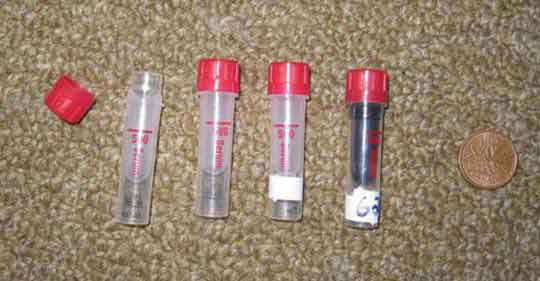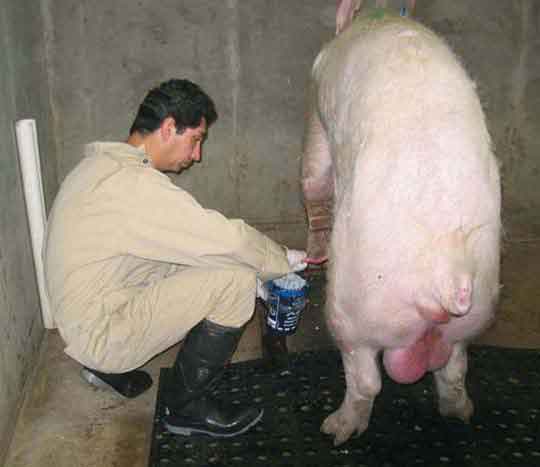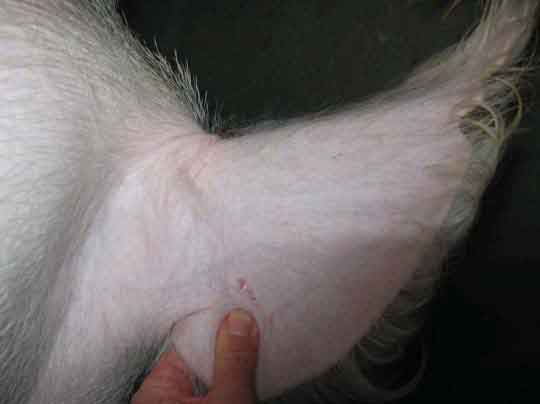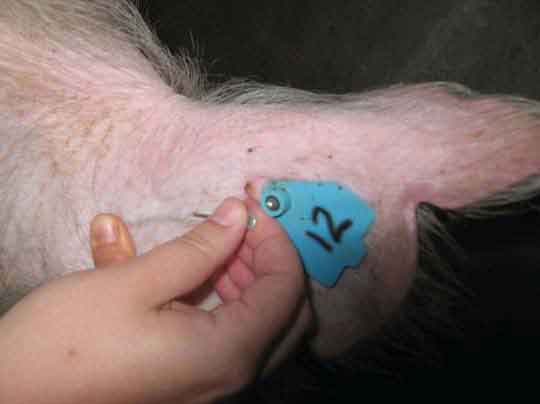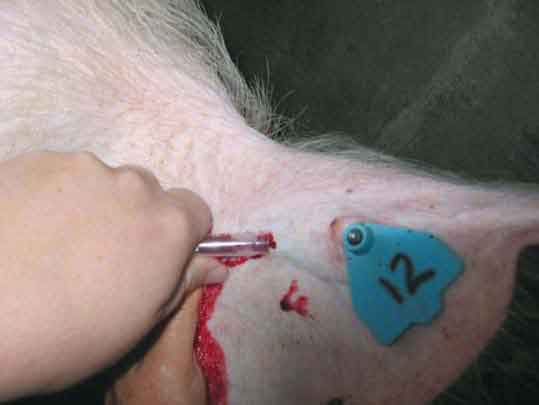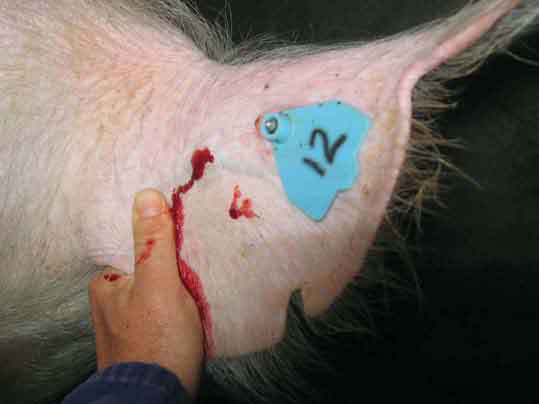Practice tip |
Non refereed |
Blood sampling boars
Cate E. Dewey, DVM, MSc, PhD; Susy Carman, DVM, PhD
CED: Department of Population Medicine, Ontario Veterinary College, University of Guelph, Guelph, Ontario, Canada. SC: Animal Health Laboratory, University of Guelph, Guelph, Ontario, Canada. Corresponding author: Dr Cate E. Dewey, Department of Population Medicine, Ontario Veterinary College, University of Guelph, Guelph, ON, Canada N1G 2W1; Tel: 519-824-4120, Ext 54070; E-mail: cdewey@uoguelph.ca
Cite as: Dewey CE, Carman S. Blood sampling boars. J Swine Health Prod. 2006;14(5):267-268.
Also available as a PDF.
We have Dr. Darwin Reicks to thank for revolutionizing the way we obtain blood samples from boars in Ontario. Last year, he taught us to collect from the ear vein while the boars were ejaculating,1 using the method published in this issue of the Journal of Swine Health and Production.2
We wanted to follow his lead, but needed a sample of sufficient size for both a polymerase chain reaction test and a PRRS ELISA test. Instead of swabs, the 500-µL serum collection tubes produced by Sarstedt (Microvette 500 with serum clotting activator, Catalogue #20.1343.100; Sarstedt Inc, Montreal, Quebec, Canada) were perfect for our use. They provided sufficient serum for the two tests and were easy to use in the field. Our methods are described and illustrated in Figures 1 through 6. At the laboratory, centrifuge the vial in a microcentifuge to harvest 250 to 500 µL of serum.
Figure 1: Label the 500-µL serum collection vial with a pre-glued paper label.
|
Figure 2: Wait until the boar begins to ejaculate.
|
Figure 3: Hold off the ear vein until it becomes obvious.
|
Figure 4: Puncture the vein with a 20-gauge needle.
|
Figure 5: Take the top off the serum collection vial and collect blood, either by letting the blood drip into the vial or by scooping the blood off the ear. Fill the vial past the white line, all the way to the rim.
|
Figure 6: There will be sufficient blood to fill a second vial if required. After samples have been collected, put pressure on the ear to reduce the chance of a hematoma forming.
|
References
*1. Reicks DL. An overview of blood collection strategies for boar studs. Iowa State University 13th Annual Swine Disease Conference for Swine Practitioners. Ames, Iowa; 2005.
2. Reicks DL, Muñoz-Zanzi C, Rossow K. Sampling of adult boars during early infection with porcine reproductive and respiratory syndrome virus by polymerase chain reaction using a new blood collection technique (blood-swab method). J Swine Health Prod. 2006;14:258-264.
*Non-refereed reference

